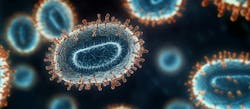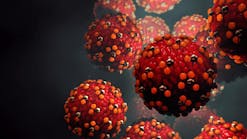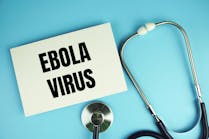Group B Streptococcus (GBS) remains the leading cause of early-onset sepsis and meningitis among newborns in the United States, with a diseases fatality rate of 4 percent to 6 percent for infants that become infected. The primary risk factor for GBS early onset disease (EOD) is maternal colonization. Vertical transmission to the newborn infant usually occurs during labor or after rupture of the membranes. It is estimated that 25 percent of all pregnant women in the United States are colonized with GBS bacteria, with the majority being asymptomatic.
The rate of transmission to the baby is approximately 50 percent and in the absence of prophylactic intervention with antibiotics, one in 200 of colonized newborns will develop GBS EOD. However, if the mother is treated with antibiotics during labor, the risk of developing GBS EOD drops to one in 4,000 babies. It has been documented that the implementation of the guidelines for antepartum screening and the use of intrapartum antibiotic prophylaxis (IAP), have had a positive impact in the reduction of GBS EOD incidence by decreasing from 1.8 cases per 1000 live births in the early 1990s to 0.22 cases for every 1,000 live births in 2017, a decline of over 80 percent.1, 2
GBS guidelines
It has been over 25 years since the publication of the first guidelines for the prevention of GBS infection in newborns. It was not until 2002 that the Centers for Disease Control and Prevention (CDC) first recommended universal screening for all pregnant women (antenatal screening), which remains as the current standard. Universal culture-based screening at 35-37 weeks gestation for identifying candidates for GBS intrapartum antibiotic prophylaxis was demonstrated to be greater than 50 percent more effective at preventing disease than using a risk-factors-based approach. The effectiveness of the intrapartum antibiotic prophylaxis is associated with the temporary decrease in maternal vaginal GBS colonization, the prevention of surface and mucus membrane colonization of the newborn, and the ability to reach levels of the antibiotic in the newborn bloodstream above the minimum inhibitory concentration for killing GBS.3,4,5
In 2010, the CDC issued a revision to the Prevention of Perinatal Group B Streptococcal Disease guidelines in alignment with the American College of Obstetricians and Gynecologists (ACOG), the American Academy of Pediatrics (AAP), the American Academy of Family Physicians (AAFP) and several other groups. Among other recommendations, the 2010 revision of the guidelines introduced new algorithms for neonatal management and IAP usage, but for the laboratories the most notable change came with the inclusion of the use of nucleic acid amplification tests (NAATs) after broth enrichment of vaginal-rectal swabs to identify maternal GBS colonization during antepartum screening.3
Most recently, in a coordinated effort in 2019, ACOG and AAP published their respective revised guidelines for preventing/managing infections caused by GBS in infants. ACOG’s and AAP’s new guidelines align with the CDC’s 2010 publication in supporting universal maternal screening and when appropriate, the use of IAP to prevent transmission of GBS from mother to infant during labor. One noted change is the timing for the antepartum screen at 36-38 weeks gestation instead of 35-37 weeks as previously recommended.
This new recommended timing for screening provides a five-week window which includes births that occur up to a gestational age of 41 weeks. These changes have minimal to no impact to the laboratory with regards to antepartum testing for expecting mothers. ACOG recognizes the use of NAATs after broth enrichment for the identification of GBS from vaginal-rectal swabs provides the best opportunity to identify a colonized mother, even when sample collection is not performed properly. Ultimately these new guidelines will replace the current CDC’s 2010 Perinatal GBS Infection Prevention guidelines.4,5
NAAT testing for GBS
While the overall rate of GBS infection has significantly decreased in the United States, a concern remains with the number of GBS EOD cases coming from mothers that were appropriately screened, but GBS colonization was not detected. A recent study that used data collected from 2006-2015 through the CDC Active Bacterial Core (ABC) Surveillance program (covering 10 states across the U.S.) specifically looked for infants younger than 90 days with invasive GBS disease, and found that there were missed opportunities for prevention of EOD. Of the total number of GBS EOD cases (1,277), 48.3 percent (617) were missed. Of the missed cases, 82.9 percent (512/617) were mothers with screening histories negative for GBS and the remaining 17.1 percent (105/617) had unknown status.6 Two additional studies have reported similar results, where women who screened negative for GBS had babies with GBS EOD.4
False negative GBS screening results can be attributed to several factors including suboptimal specimen collection, timing of the collection, transport and processing of the sample, and the method used for testing.
Incorrect sample collection (mainly vaginal collection without rectal sampling) is one of the most common errors made when collecting samples. In order to maximize GBS recovery, it is recommended that a single swab be obtained first from the lower vagina and then the rectum. The combined sample provides higher culture yield than single source samples. The laboratory has no way of knowing if the sample was collected properly, and since incorrectly collected samples can lead to false negative results, the use of a NAAT test after the enrichment broth step has demonstrated to be the most appropriate testing approach to maximize detection.4,5
ACOG’s new recommended timing for sample collection for universal screening between 36-38 weeks of gestation, allows for a valid culture result that covers births up to 41 weeks. Studies have shown that the predictive ability of the prenatal cultures decreases significantly when the culture-to-birth interval is longer than five weeks. Testing at 36-38 weeks also helps minimize repeat testing to confirm any changes in the colonization status of the mother.5
Transportation of the sample from the collection site to the laboratory can also negatively impact test results. Placing the swabs in an appropriate transport medium can help sustain viability of the organism. However, the recovery of the isolates declines within one to four days, especially if the samples are subjected to elevated temperatures. The best recovery is obtained when the sample is stored at 4°C and processed within four hours of collection. Samples should undergo 18-24 hours of incubation at 35-37°C in broth enrichment medium to enhance the recovery of GBS. Studies have shown that when direct plating is used without broth enrichment, as many as 50 percent of women who are GBS carriers have false negative culture results. In a situation where microbial load is low due to unfavorable transport conditions, even with broth enrichment, the use of a NAAT test can help enhance detection.3,5
When it comes to testing methods, the combination of broth enrichment followed by a nucleic acid amplification test has shown in repeated studies to outperform culture-based tests. Yet the CDC and ACOG recognize that there is still a high percent of GBS EOD cases occurring from mothers with a negative antenatal screen.
This observation can be attributed in part to the fact that NAAT testing has not been widely adopted. The results from a recent study that surveyed 544 laboratories (93 percent participation) as part of the 2016 CDC ABC Surveillance program, reported that only 18.7 percent of the laboratories used NAAT for GBS testing (7.3 percent used NAAT for antepartum testing only, 4.1 percent for intrapartum testing, and 3.4 percent for both). Of the labs using NAAT for antepartum testing, 82 percent reported using an enrichment step. Of the participating laboratories the vast majority (97.4 percent) were hospitals or clinical laboratories and 12.6 percent were private or commercial laboratories. Even though the use of NAAT has increased from 2010 to 2016, its use remains limited, with room for improvement.3,5,7
Proponents of NAAT tests recognize other benefits associated with molecular tests, most notably faster turnaround time compared to culture and the ability to report results back to physicians more quickly. While it is widely accepted that accuracy is more important than turnaround time for antenatal GBS screening, it’s worth taking into consideration that faster results can bring peace of mind to anxious expectant mothers. Also, the move from culture-based methods to NAAT allows for enhanced workflow, labor efficiencies and decreased hands-on time.
Additionally, molecular tests remove subjectivity from results interpretation, which in turn helps minimize errors. The accuracy with which GBS is diagnosed can a have significant impact and long-term consequence on the life of a newborn. Let’s hope that the trend continues with more laboratories making the move from their GBS cultures to molecular assays for antenatal screening of pregnant mothers.3,4,7
References:
- CDC Group B Strep Fast Facts and Statistics, published June 25, 2019. https://www.cdc.gov/groupbstrep/about/fast-facts.html (accessed 5/29/2020)
- CDC Active Bacterial Core (ABC) Surveillance Report, Group B Streptococcus 2017. https://www.cdc.gov/abcs/reports-findings/survreports/gbs17.html (accessed 5/29/2020)
- Verani JR, McGee L, Schrag SJ. Prevention of Perinatal Group B Streptococcal Disease—revised guidelines from CDC, 2010. MMWR Recomm Rep. 2010; 59(RR-10):1-36.
- Puopolo KM, Lynfield R, Cummings JJ. Management if Infant at Risk for Group B Streptococcal Disease, Pediatrics 2019 Aug; 144 (2); 1-17.
- Prevention of Group B Streptococcal Early-Onset Disease in Newborns, ACOG Committee Opinion Number 797, Obstetrics & Gynecology 2020 Feb; 135(2);e51-72.
- Nanduri SA, Petit S, Smelser C, et al. Epidemiology of Invasive Early-Onset and Late-Onset Group B Streptococcal Disease in the United States, 2006 to 2015, JAMA Pediatrics 2019 Mar; 173(3): 224-233.
- Fay K, Almendras O, Robinson-Dunn B, Schrag S. Antenatal and Intrapartum Nucleic Acid Amplification Test Use for Group B Streptococcus Screening – United States 2016, J Diag Micro & Inf Dis 2019 Jun, vol 94:2; 157-159.





